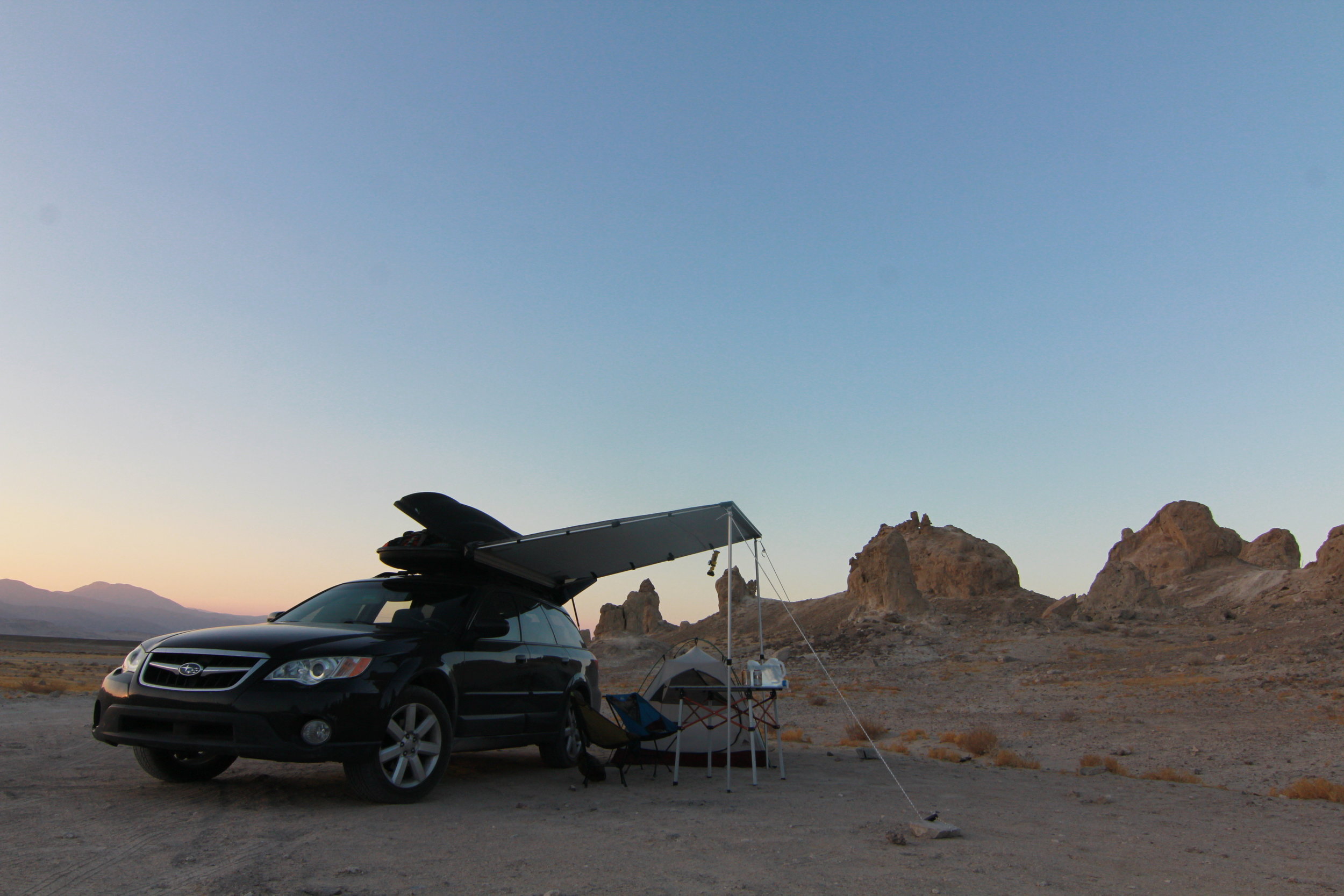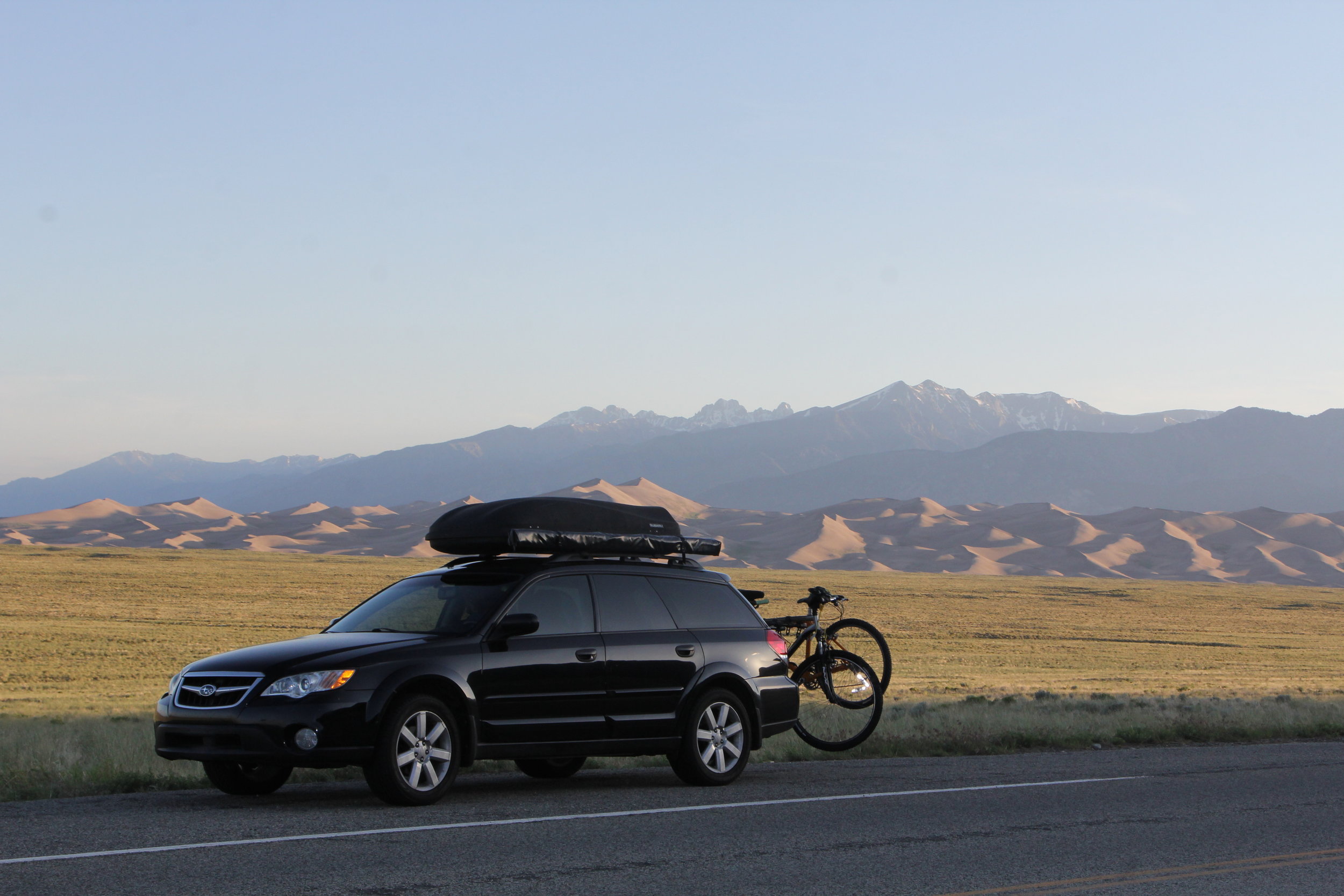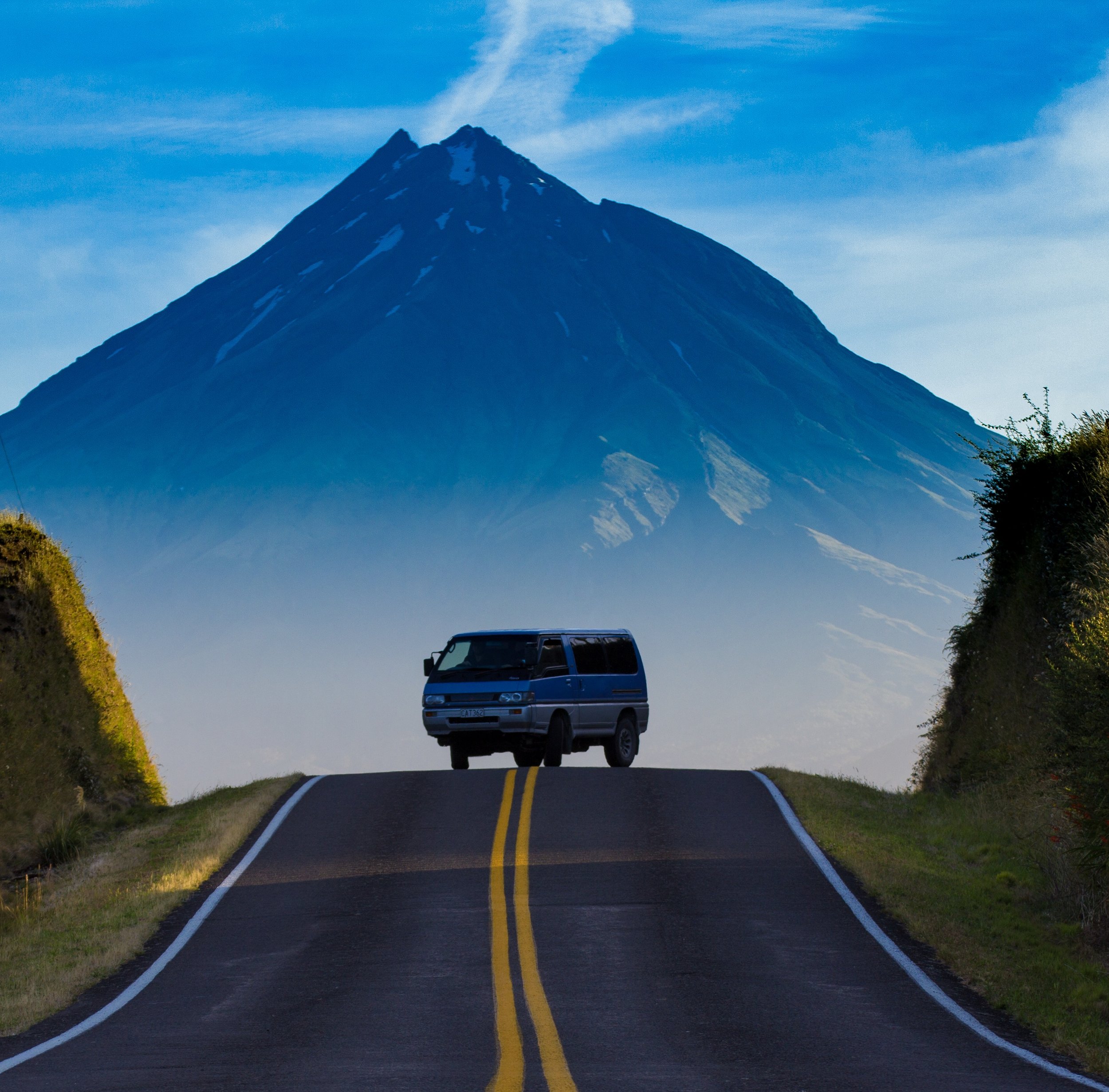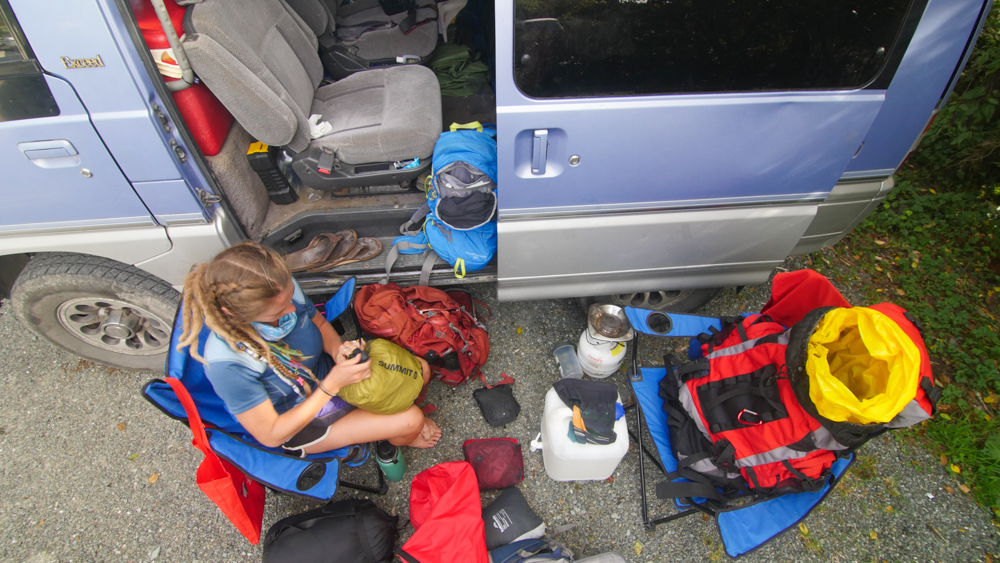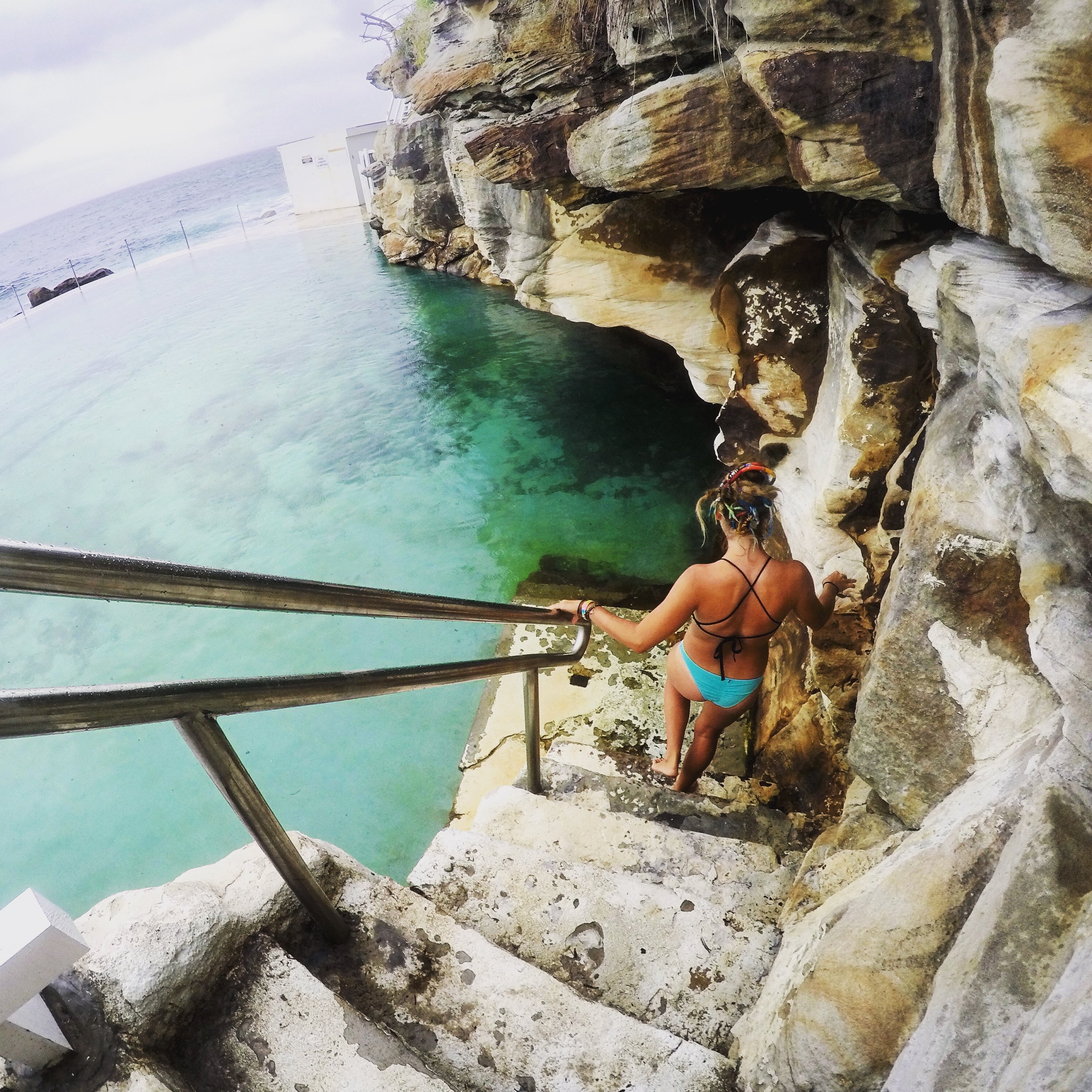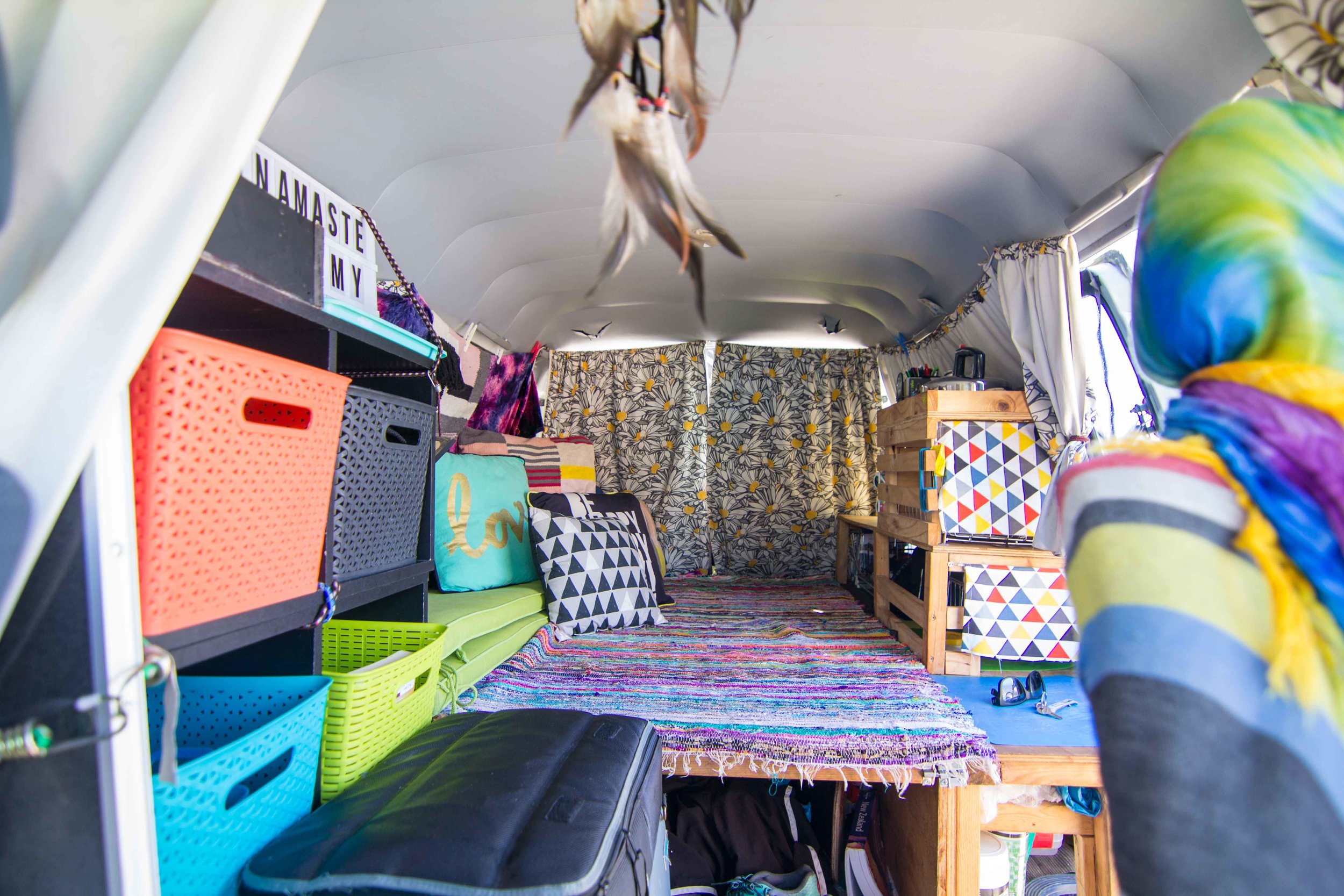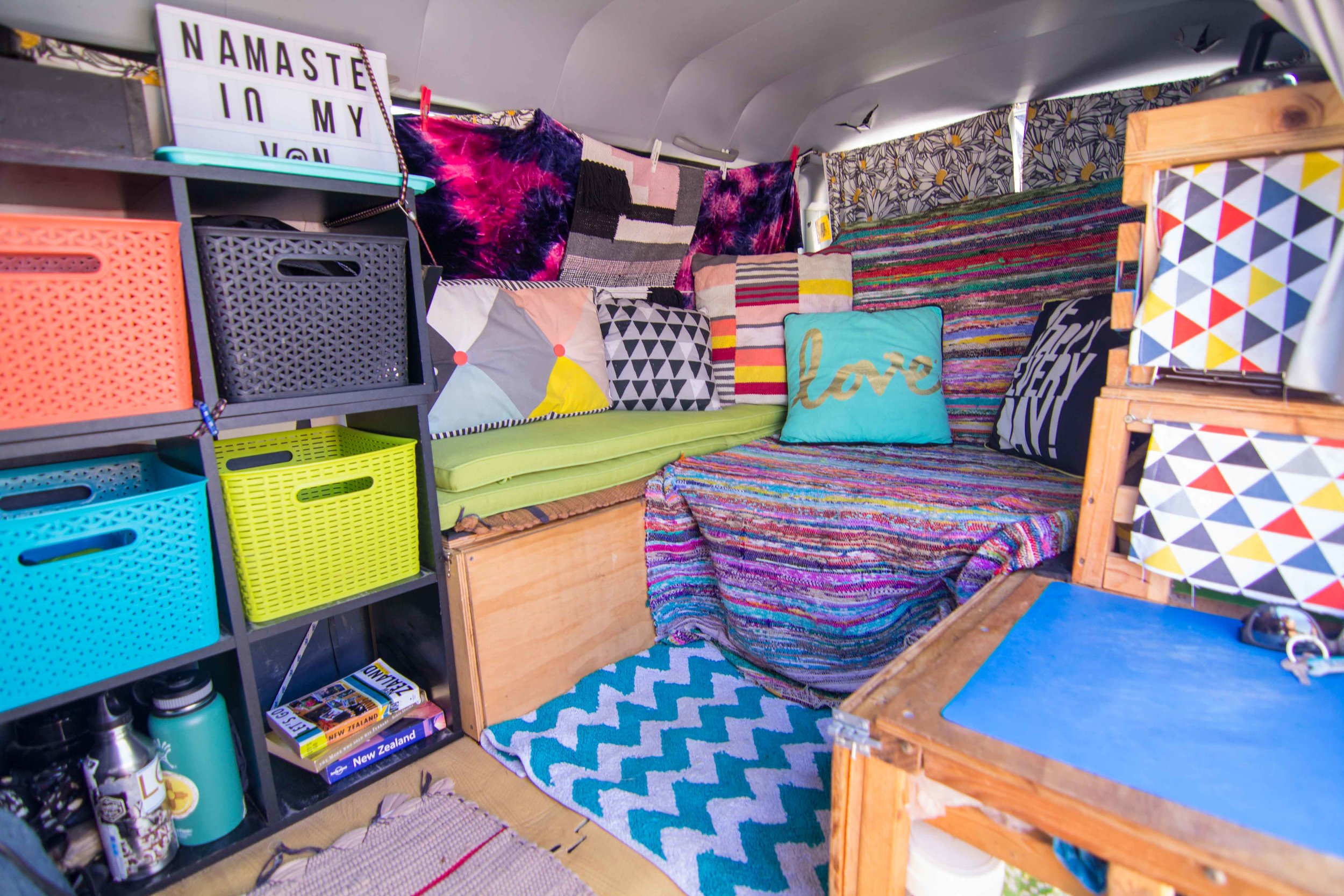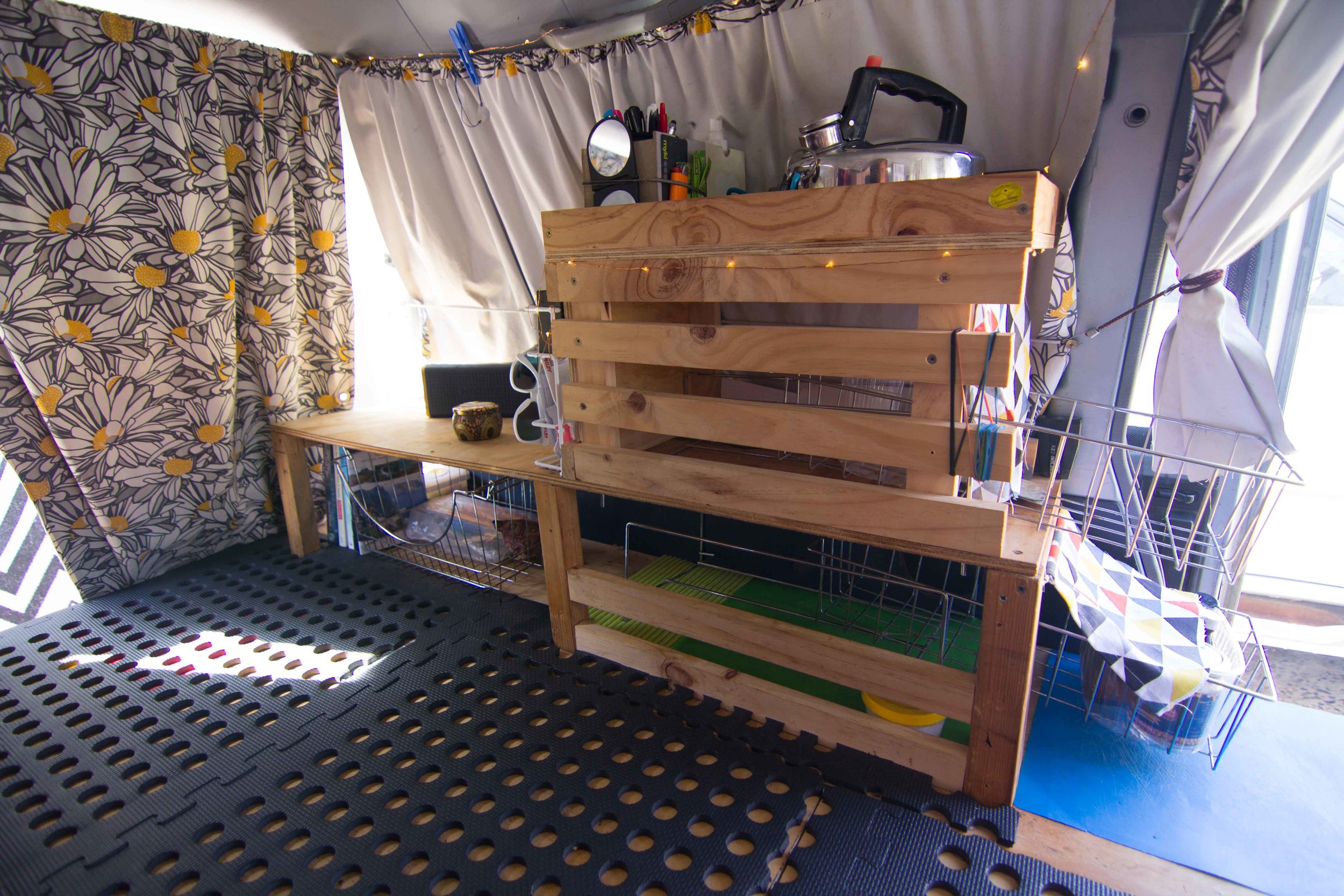We returned to the States and were ready to get our current vehicle ready for some summer road trips. We have a 2009 Subaru Outback that we added an easily removable sleeping platform, as well as, some other accessories to make life on the road more comfortable.
The first order of business was the sleeping platform. I got the design from multiple internet sites and basically added a few of my own touches. I bought all the equipment from Home Depot. I used door hinges for the fold out head rest, 1/4 plywood for the platform and sides, 1x1 planks for support, and some very cheap carpet. I have a video of the set up below. I had no idea building the platform would actually create so much storage. It adds two compartments in the back. In one of the compartments, I added a Tupperware that fits perfectly. The other is a great stash spot for expensive items. I even had my car broken into with some of the really expensive items inside and they were missed due to being hidden under the back storage. The bed also gives you a little storage compartment underneath, where the seats fold down. So, there is actually some organization to car camping, finally!
CHECK OUT THE BLUEPRINTS HERE!!!! Enter Your Email for a free download!
In order to be comfortable in the Camparu, you’ll need overhead storage. Luckily, I already own a massive Thule cargo box that holds my stove, chairs, tables, tarps, tools, gas, wood, and just about anything you don't want in the car. I highly recommend a roof box, you can put so much in them and they are easy to access on lower vehicles. I've put firewood, construction material, trash, all kinds of shit I don't ever want on the inside of my car in that box.
I threw on an old bike rack I found sitting around my parent’s house for the mountain bikes. I also added a Thule Slim Shady awning that I got at REI. When we were in Australia, we saw thousands of rigs with awnings. We saw what a benefit they add to the outside of your vehicle especially when you’re a small vehicle and need a place to chill in the shade. We’ve already used it quite a bit and it has kept us dry and comfortable outside during rain storms, hot days, and rainy nights. It's awesome to have the awning on the Subaru because it basically gives you a patio to chill on out front. Another thing we just recently discovered is wrapping the lower part with tarp to create walls, while cooking makes cooking easy in wind and cold.
We also know that we will eventually be buying a bigger van and will be utilizing this stuff in there as well, so we bought all the car camping necessities at REI on my new REI credit card (gotta rack up those dividends) during their Memorial Day sale. We bought the smallest most compact items that we felt were the best quality. And we've had zero complaints.
1 x Camp Chef Everest 2 Burner Stove
1 x GSI Outdoors folding water cube 5.3g
2 x Klymit Static V Sleeping Pads
We also scored an old school 12v Subaru Outback Thermoelectric Warmer/Cooler (kinda like this one) at a garage sale for $20 and bought a cheap power inverter at Home Depot to power regular AC while we drive.
I will admit traveling out of the Subaru is tough. Most of the time all of your shit is crammed in it and there is no space. A few times we have set our tent up just to put all our gear inside it so we could sleep in the car on a cold night. We had it very packed up for our two month long trip to California and Burningman. It made it difficult but, normally we would never have near as much gear. When we travel light, it's great. You know where everything is and everything has a place. We are really enjoying the gas mileage and the versatility of the Outback. We have taken it on so many dirt roads and have depended on the AWD so many times. The Outback really is an amazing vehicle and it's been a fun, but challenging experience traveling out of such a small car, but it makes us very eager to get into a larger vehicle.




